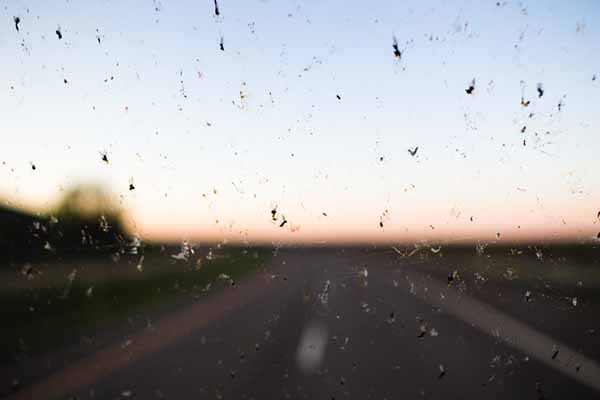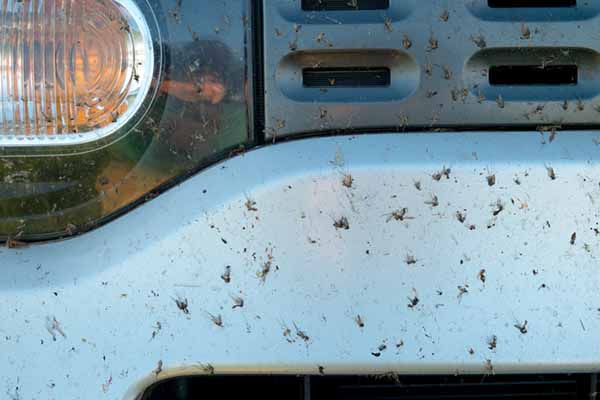
Drivers all know the feeling. They’ve just been to the carwash and are driving along in their clean vehicle when, suddenly, a large bug splatters all over the windshield. Detailers know that bugs are actually quite harmful to auto paint, so removing them promptly is a must and keeping them at bay is even better. A great invention that can help with the latter is the bug deflector. To find out more about this nifty technology and also about why staving off bug damage is important, keep reading.
Keeping Bugs at Bay Is Important Because They Can Damage Auto Paint
Pros who work in auto detailing know that splattered bugs do much more than just make a car look crummy. They can actually cause some serious damage to automotive paint, especially if left on a car for too long. This is because their remains quickly turn acidic and this eats away at the top layer of a car’s paint.
Vehicle owners may not always be able to promptly remove bug remains after every drive, so preventing an amassment of splattered bugs in the first place can be quite helpful. This is where bug deflectors can come in handy.
Bug Deflectors Redirect Insects and Other Small Debris Up and Over Cars
Bug deflectors are accessories that car owners can install on their hoods to reduce the amount of insects and small debris that may fly into and around windshields. They do this by redirecting the airflow that occurs naturally across a car’s hood. Whereas usually this airstream goes straight into the windshield and surrounding areas, bug deflectors angle it upwards. This lets the current of air pass over the top of a car. Any bugs and small debris caught in this airstream are therefore more likely to end up harmlessly flying past the car instead of hitting it.
Custom Designs Matter When It Comes to Bug Deflector Technology
Though bug deflector technology sounds amazing, it’s important to remember that not all bug deflectors are made equal and that bug deflectors are not a one-size-fits-all matter. This is because each car has its own unique aerodynamics depending on its make and model. As such, the way air flows over each car’s hood will be different, and a bug deflector that may work well for one car may not work well for another.
The most effective bug deflectors are therefore those that have been custom designed for the particular brand and model of the car in question. This means that drivers can trust deflectors that have been modeled using computational fluid dynamics software using data relevant to their car. If a particular deflector has also been wind tunnel tested, this will provide an additional guarantee of its effectiveness.
Auto Detailing Is Required to Remove Bugs That Make It Past a Deflector
As wonderful as bug deflectors are, they may not necessarily provide 100 per cent protection, especially when driving at slower speeds where the diverted airstream is not always strong enough to pull away oncoming six-legged traffic. A few casualties are therefore usually inevitable.
Individuals who work in professional automotive detailing know that any bug splatter that does occur should be removed as promptly as possible, and not by vigorous scrubbing. Instead, a safe cleaning liquid such as a solvent, dedicated bug remover, pre-wax cleaner, or spot treatment formula should be used to loosen any insect remains before wiping the car clean with a microfiber towel.

Any potential damages to the paint underneath can then be remedied with a compound and a polish. Finally, the application of a layer of wax can help protect a car’s paint from any future bug splats.
Are you interested in pursuing an auto detailing career?
Contact Automotive Training Centres to learn about our training programs!

